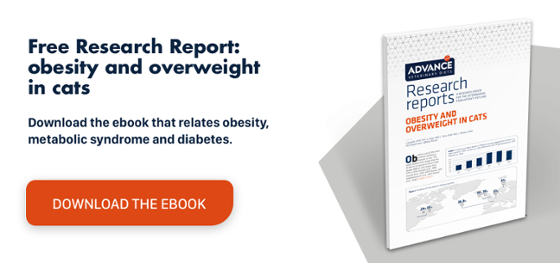Obesity in cats: advice for owners
New e-learning session: obesity in cats
This new instalment is delivered by Dr Cecilia Villaverde, a veterinary surgeon and doctor of small animal nutrition from the Autonomous University of Barcelona who has gained experience from a 4-year residency at the University of California, Davis (UCD).
The obese cat
Obesity mainly affects urban cats who do not have outdoor access and live a sedentary lifestyle. Males suffer more than females, and sterilisation is usually a predisposing factor because energy needs decrease by about 30% in castrated cats.
Owner awareness
Obesity in cats is not a problem of aesthetics. Owners need educating on how to prevent the condition as it affects their pet’s health in many different ways:
- It increases the risk of developing secondary diseases such as feline diabetes.
- Hygiene problems. Obese cats cannot reach all the nooks and crannies of their bodies, so they cannot groom themselves correctly. This can trigger problems with the skin and coat, besides being uncomfortable and stressful.
- Complicates surgical management. Excess fat makes it hard to administer anaesthesia if surgery is required for any reason.
Measures for preventing obesity in cats at home
It is best to act before the problem develops. Some tips may help owners with sedentary cats:
The cat’s environment should be varied and stimulate its curiosity; toys, areas to explore and physical challenges will help the cat stay active. Activity will help preserve the patient’s muscle mass and avert stress.
Owners often reward their pet with food. However, it is a much better idea to get used to playing with the cat or brushing it rather than giving it a treat. This will help prevent obesity and strengthen the bond between the person and the animal.
There is no clear evidence about the relationship between leaving food available at all times and the onset of obesity. However, it does seem clear that a cat that eats two or more times throughout the day feels more satisfied.
A good method to practice at home is to measure out the food indicated for the cat’s size and weight, then divide it into a few portions. This also means the owner can easily note changes in the cat’s feeding pattern if a health problem occurs.
Finally, when two or more cats live together, measuring out rations and administering them separately will prevent one of them from eating more than their ideal amount.

